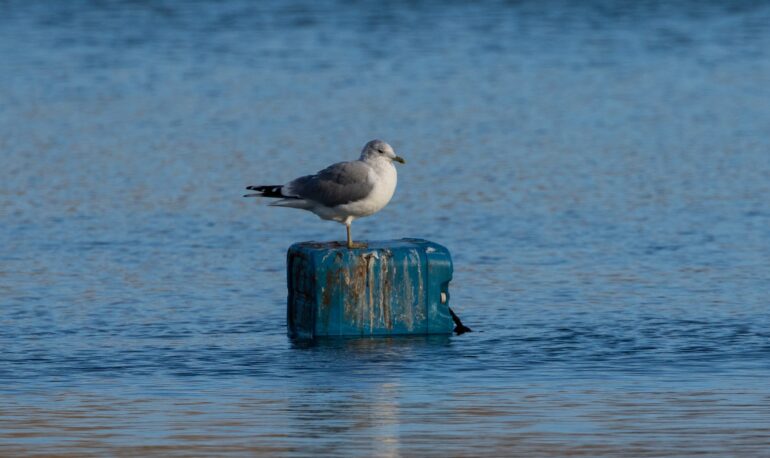TL;DR:
- Estimates indicate that approximately eight million tonnes of plastic waste are present in the world’s oceans.
- Monitoring the paths of plastic debris is challenging due to factors such as river levels, dams, and unpredictable geographical conditions.
- Researchers are developing techniques to automate waste detection using machine learning, particularly deep learning with convolutional neural networks.
- Satellites, planes, balloons, drones, and boats are equipped with computer vision systems to detect plastic waste.
- Despite advancements, there are still constraints and challenges to overcome in detection over larger areas.
- Different methods, including the reflectance of plastics and shape recognition, are being used for detecting marine plastic litter.
- Short-range detection through drones and fixed cameras have limitations and cannot fully replace traditional monitoring methods.
- The lack of comprehensive and diverse databases hinders progress in machine learning for waste detection.
- Improving algorithms for object classification and utilizing spectral wavelengths and segmentation techniques hold promise for future advancements.
Main AI News:
According to current estimates, approximately eight million tonnes of plastic waste are present in the world’s oceans. Addressing this issue requires monitoring the complex paths followed by this debris as it makes its way to the open seas. However, these paths are affected by factors such as river levels, dams, and unpredictable geographical conditions, making monitoring missions challenging.
To overcome these difficulties, researchers are exploring techniques that leverage machine learning, specifically deep learning using convolutional neural networks, to automate waste detection. Satellites, planes, balloons, drones, and boats have been equipped with computer vision systems trained to identify plastic waste, offering the potential for more extensive and regular detection. However, numerous challenges still need to be addressed.
“Convolutional neural networks integrate the capacity of describing different visual properties (e.g., color, texture, shape) of images with the use of this information for determining if a given image region contains the object (e.g., litter) of interest,” explains Ricardo da Silva Torres, a professor of data science and artificial intelligence at Wageningen University & Research and visual computing at the Norwegian University of Science and Technology.
In 2021, various responses to a call for tenders by the European Space Agency (ESA) focused on projects aimed at detecting marine plastic litter using this approach. The Ocean Cleanup, a non-governmental organization, also developed its own artificial intelligence surveillance and mapping tool during the same year.
To evaluate the effectiveness of these techniques, a study published in the scientific journal Water Research in August 2022 by researchers from the Federal Institute of Hydrology in Koblenz, Germany, examined different methods employed. Some methods rely on the reflectance of plastics, which differs from that of natural materials like algae, wood, or foam. In 2020, a team led by Lauren Biermann from the Plymouth Marine Laboratory (United Kingdom) demonstrated the ability to identify patches of marine plastic using optical satellite data, specifically from ESA’s Sentinel-2 satellites. Other methods aim to recognize the shapes of objects such as bottles, cans, and bags but are limited to close-range or smaller areas.
The study by the Koblenz researchers also focuses on short-range detection, which involves aerial drones or fixed cameras on bridges and elevated points within a distance of fewer than 120 meters. Their conclusion is clear: “To-date, none of the discussed automated approaches can fully replace traditional macro-plastic monitoring methods, such as visual counting or site surveys.” Issues such as illumination variations, objects with ambiguous shapes, and local environmental factors contribute to the inability of automated approaches to match the accuracy of traditional methods.
Another significant challenge is the lack of comprehensive databases, which play a crucial role in machine learning. Existing databases are limited in size and lack diversity. Constructing new databases is a substantial undertaking, as labeling images is a labor-intensive and time-consuming task that requires the expertise of trained annotators. Ricardo da Silva Torres, who conducted a comparative study of deep-learning tools for plastic litter detection in January 2022, emphasizes the need for more datasets. Recognizing this, he and his team developed a new dataset called PlastOPol, comprising 1,000 additional images, as there was only one publicly available dataset with 1,500 images of plastic litter.
Conlcusion:
The development of automated waste detection techniques using machine learning and convolutional neural networks presents significant opportunities for the market. By leveraging advanced technologies such as computer vision systems, businesses can enhance their capabilities in monitoring and detecting plastic waste in the world’s oceans. However, it is crucial to address the challenges related to detection over larger areas, the limitations of short-range methods, and the scarcity of comprehensive databases.
Overcoming these obstacles will require continued innovation and collaboration among stakeholders. As algorithms improve and spectral analysis and segmentation techniques advance, businesses can expect more efficient and accurate identification of marine litter. This opens up possibilities for developing new solutions, products, and services aimed at addressing the global issue of plastic pollution while also contributing to a more sustainable future.

